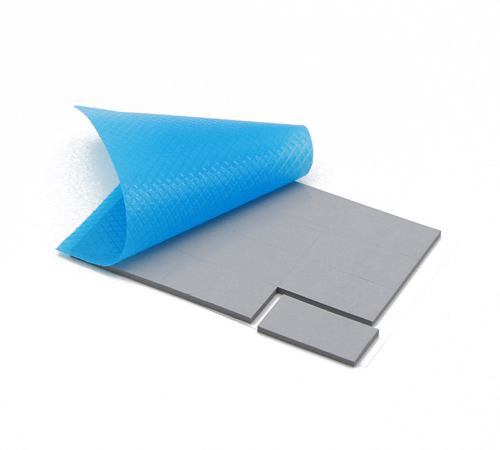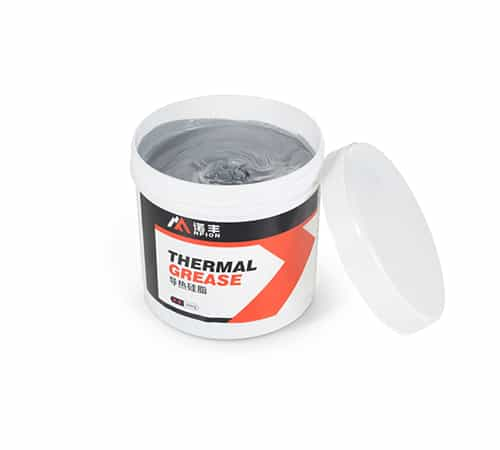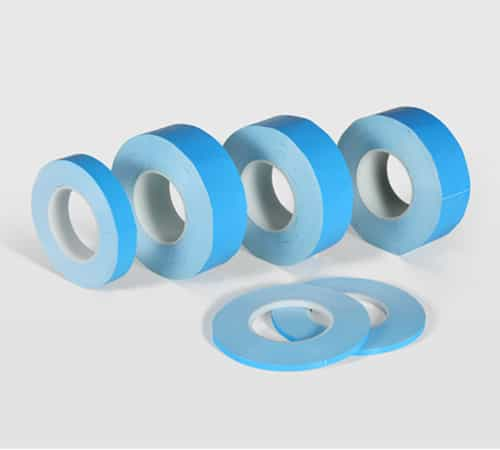What is Shear Strength and How is It Calculated?
Author:NFION
Date:2025-02-12 11:15:23
In material science and engineering, shear strength is one of the critical indicators used to evaluate material performance, especially in the design of connections, adhesives, and thermal management materials. Shear strength helps engineers and technicians assess the ability of materials to withstand shear stress, ensuring the reliability and stability of designs. NFION Thermal will delve into the definition, principles, and calculation methods of shear strength, helping readers better understand this crucial concept.
What Is Shear Strength?
Shear strength refers to the maximum stress that a material can withstand when subjected to shear forces. When a material is exposed to external shear forces, the intermolecular or atomic interactions within the material undergo changes, resulting in shear stress. Shear strength measures the material's resistance to shear deformation, typically expressed in megapascals (MPa).
In simple terms, shear strength describes the maximum force a material can bear under shear stress without experiencing fracture or permanent deformation. It is a vital parameter in many industrial applications, particularly in evaluating the reliability of bonding materials (such as thermal interface materials, adhesives, etc.) and structural components (such as welding, riveting, etc.).
Factors Influencing Shear Strength
Shear strength is not a fixed value and is influenced by multiple factors. The primary influencing factors include:
1. Material Properties: Different materials have different shear strengths. For example, metals usually have higher shear strengths, while plastics or rubber materials generally have lower shear strengths.
2. Temperature: Shear strength may vary with temperature changes. High temperatures generally reduce the shear strength of materials, while low temperatures can make them more brittle.
3. Surface Treatment and Structure: The surface roughness, treatment methods (such as heat treatment, coating, etc.), and internal structure (such as grain size, defects, etc.) of a material can all impact its shear strength.
4. Loading Rate: The rate at which shear stress is applied also affects the material’s maximum shear strength. Higher loading rates tend to reduce the material’s shear strength due to its yielding and plastic deformation characteristics.
5. Humidity and Environmental Conditions: Environmental factors, such as humidity and chemical corrosion, can significantly affect the shear strength of materials, particularly for those used outdoors or in harsh conditions.
Methods for Testing Shear Strength
There are various methods for testing shear strength. The most common include:
1. Direct Shear Test: This is the most straightforward method. In the test, the sample is subjected to a shear load, and the maximum force at which the material fails is measured. Shear strength is calculated by dividing the maximum shear force by the cross-sectional area of the sample.
2. Tensile Test: In some cases, tensile tests can be used to estimate shear strength. For example, when shear failure occurs under tensile load, shear strength can be estimated using the material’s yield strength and Poisson's ratio.
3. Shear Bond Test: This test is commonly used to evaluate the shear strength of bonding materials (such as thermal interface materials). In the test, two bonded surfaces are sheared along the interface, and the maximum shear force that the bonded interface can withstand is measured.
How to Calculate Shear Strength
Shear strength is typically calculated based on experimental data and shear force. The common formula for calculating shear strength is:
T=Fmax / A
Where:
● Tis the shear strength (in MPa).
● Fmax is the maximum shear force the material can withstand (in Newtons, N).
● A is the cross-sectional area of the material (in square millimeters, mm²).
Using this formula, shear strength can be calculated based on the maximum shear force recorded during the experiment and the sample’s bearing area. It is essential to note that this formula applies to direct shear tests and simple shear conditions.
For complex structures or materials under different loading conditions, shear strength calculations may need to consider additional factors, such as shear stress distribution and material anisotropy.
Practical Applications of Shear Strength
Shear strength plays a significant role in various fields and is critical in the material selection and design process, affecting product performance and safety. Some typical applications include:
1. Thermal Management Materials: In the application of thermal interface materials (such as thermal adhesive, thermal conductive Adhesive tape, thermal conductive pads, etc.), shear strength directly affects the reliability and durability of the materials. Specifically, in thermal management systems for electronic components, materials with higher shear strength maintain better stability in connections, preventing failure due to shear stress.
2. Adhesives and Coatings: In many industrial applications, the shear strength of adhesives and coatings determines the longevity and resistance of connections. Especially in industries such as automotive and aerospace, adhesives with high shear strength ensure component stability under extreme conditions.
3. Structural Design: In construction, machinery, and other structural designs, shear strength is used to calculate the material’s load-bearing capacity under shear forces, ensuring the safety and stability of the structure.
Conclusion
Shear strength is a critical performance indicator in material science, directly influencing material selection and design in many engineering applications. By understanding the definition, influencing factors, testing methods, and calculation methods for shear strength, engineers can make informed decisions about the materials best suited to meet different application needs.
For thermal management materials and adhesives, shear strength is not only a basic performance parameter but also a key factor in their long-term stability and reliability in practical applications. Therefore, gaining a deep understanding of shear strength and its calculation methods is essential for ensuring product quality and engineering safety.
 CN >
CN >



